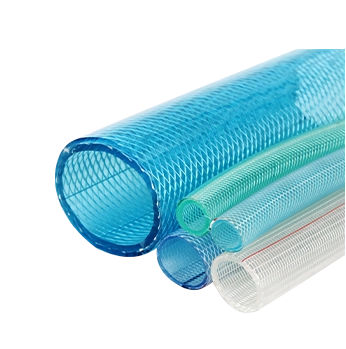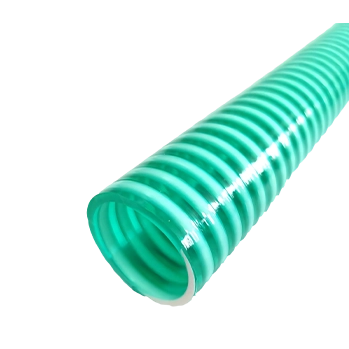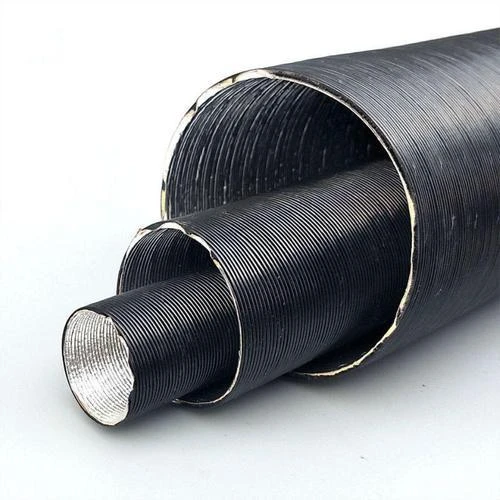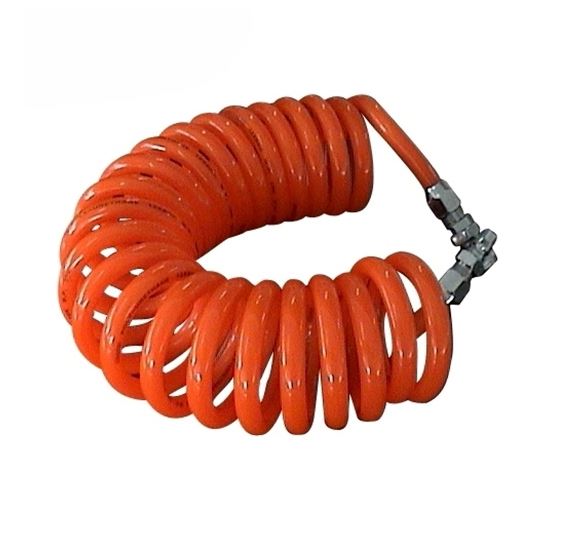Durable Blue Plastic Suction Hose – Flexible & Reliable
Understanding the Modern Industrial Fluid Transfer Landscape
In diverse industrial sectors, the efficient and reliable transfer of liquids is paramount for operational continuity and safety. From agriculture and construction to mining and municipal services, the integrity of fluid conveyance systems directly impacts productivity and environmental compliance. Modern trends in fluid transfer emphasize not only high performance and durability but also sustainability, chemical resistance, and ease of deployment. This has led to the widespread adoption of advanced polymeric hoses, particularly those crafted from PVC and specialized plastics, which offer superior alternatives to traditional rubber or metal conduits in many applications. The demand for lightweight, flexible, and robust solutions capable of handling various media under different pressure and temperature conditions is steadily increasing. Innovations in material science and manufacturing processes are continuously enhancing the capabilities of these hoses, making them indispensable for critical fluid management tasks. As industries seek more cost-effective and environmentally sound solutions, the focus shifts towards components that ensure minimal leakage, long service life, and adaptability to complex terrains or demanding operational environments. This evolution underscores the importance of selecting the right hose for specific applications, a decision that can significantly influence overall system efficiency and maintenance costs. The selection process now often considers factors beyond mere pressure ratings, including chemical compatibility, abrasion resistance, UV stability, and ease of repair or replacement. The market is also seeing a rise in specialized variants designed for specific media, such as abrasives or corrosive chemicals, highlighting the nuanced requirements of contemporary industrial operations.
Within this evolving landscape, the blue suction hose has emerged as a quintessential component for a multitude of liquid transfer applications, particularly where positive pressure or vacuum conditions are encountered. These hoses, often constructed from premium PVC (Polyvinyl Chloride), are engineered to withstand the rigorous demands of industrial pumping, dewatering, and material conveyance. Their distinct blue coloration often signifies specific material compositions or performance characteristics, making them easily identifiable in complex piping networks. The versatility of a blue suction hose stems from its unique combination of flexibility, chemical resistance, and vacuum ratings, enabling it to efficiently draw water, slurries, and certain chemicals without collapsing under negative pressure. Furthermore, advancements in PVC compounds have enhanced their abrasion resistance and UV stability, extending their operational lifespan even in harsh outdoor environments. This makes them an economical yet high-performing choice for agricultural irrigation systems, construction site dewatering, municipal wastewater management, and light industrial fluid transfer tasks. The increasing focus on operational efficiency and reduced downtime further elevates the significance of reliable suction hoses, as their failure can lead to significant logistical and financial setbacks. Consequently, manufacturers are continuously innovating to improve the mechanical properties and environmental resilience of these hoses, ensuring they meet the stringent requirements of modern industrial applications while also addressing sustainability concerns through improved material longevity and recyclability.

Technical Specifications and Performance Parameters
The performance of any fluid transfer system is fundamentally dependent on the precise technical specifications of its components. For a blue suction hose, critical parameters include material composition, diameter, wall thickness, working pressure, burst pressure, and temperature range. Most industrial-grade plastic suction hose products utilize a robust PVC formulation, often reinforced with a rigid PVC helix. This composite structure provides excellent flexibility for ease of handling while maintaining superior resistance to kinking and crushing under vacuum. Diameter specifications, ranging typically from 1 inch to 12 inches (25mm to 300mm) or more, dictate flow rates and system capacity, ensuring compatibility with various pumps and connectors. The wall thickness is crucial for determining the hose's resistance to abrasion and its ability to maintain structural integrity under both positive and negative pressures. Working pressure ratings, typically expressed in PSI (pounds per square inch) or bar, indicate the maximum continuous pressure the hose can safely withstand, while burst pressure provides a critical safety factor, often 3 or 4 times the working pressure. Temperature compatibility, usually between -5°C to 65°C (23°F to 149°F), ensures the hose maintains its flexibility and mechanical properties across diverse environmental conditions. Additionally, specialized properties like UV resistance are essential for outdoor applications, preventing degradation from prolonged sun exposure, while a smooth inner bore minimizes friction and maximizes flow efficiency, reducing energy consumption for pumping systems.
To illustrate the typical performance characteristics of a high-quality plastic suction hose, consider the following technical parameters that dictate its suitability for industrial applications. These specifications are meticulously tested and validated to meet or exceed industry standards such as ISO and ANSI, ensuring reliable operation in demanding environments. For instance, the vacuum rating, often expressed in inches of mercury (Hg), is a crucial factor for suction applications, guaranteeing the hose will not collapse when drawing liquids. Chemical resistance charts are also vital, detailing compatibility with various industrial fluids, acids, alkalis, and solvents, thus preventing material degradation and ensuring product longevity. The hose's bending radius is another practical consideration, as it determines how tightly the hose can be coiled or routed without kinking, which is essential for maneuverability and installation in confined spaces. Furthermore, weight per foot is an important logistical parameter, impacting transport, installation, and overall system design, particularly for long hose runs. Leading manufacturers like Kebing Hose adhere to stringent quality control protocols, including hydrostatic testing and vacuum collapse testing, to verify these parameters. This commitment to precision engineering ensures that each hose delivers consistent, high-performance results, minimizing downtime and maximizing operational efficiency for end-users in sectors ranging from agriculture to heavy construction. Understanding these detailed specifications allows engineers and procurement managers to make informed decisions, selecting the optimal hose solution for their specific fluid transfer requirements, thereby enhancing system reliability and overall operational cost-effectiveness. The table below provides a representative overview of typical specifications for a robust industrial suction hose.
| Parameter | Typical Value Range | Explanation / Significance |
|---|---|---|
| Material | High-grade PVC with Rigid PVC Helix | Ensures flexibility, abrasion resistance, and non-collapsing under vacuum. |
| Inner Diameter (ID) | 1" to 12" (25mm to 300mm) | Affects flow rate and compatibility with pumps/fittings. |
| Working Pressure | 60 PSI to 150 PSI (4.1 to 10.3 bar) | Maximum continuous pressure for safe operation. |
| Burst Pressure | 180 PSI to 450 PSI (12.4 to 31.0 bar) | Safety margin, typically 3x working pressure. |
| Vacuum Rating | 28-29 inHg (711-736 mmHg) | Prevents collapse under suction, close to full vacuum. |
| Temperature Range | -5°C to 65°C (23°F to 149°F) | Operating limits for material integrity and flexibility. |
| Bend Radius | Varies by ID, typically 2-5 times ID | Minimum radius for coiling/routing without kinking. |
| Abrasion Resistance | Excellent | Resists wear from abrasive media (sand, gravel). |
| UV Resistance | Good to Excellent | Prevents degradation from prolonged sun exposure. |

The Advanced Manufacturing Process of Suction Hoses
The manufacturing of a high-performance blue suction hose is a sophisticated process that leverages advanced polymer extrusion and winding technologies to create a durable, flexible, and reliable product. It begins with the precise formulation of high-grade PVC compounds, carefully selected for their desired properties such as flexibility, chemical resistance, abrasion resistance, and UV stability. These compounds are then fed into specialized extruders. The core of the hose, typically a smooth inner liner, is formed through a continuous extrusion process, ensuring a uniform wall thickness and a low-friction surface for efficient fluid flow. Concurrently, a rigid PVC helix is manufactured. This helix, which gives the hose its excellent crush and vacuum resistance, is then intricately wound around the still-soft extruded liner. This spiral winding is critical, providing the structural integrity needed to prevent collapse under suction and to withstand external pressures. Depending on the design, additional layers of PVC or reinforcing materials might be applied over the helix to enhance durability and overall strength. The precise control of temperature, pressure, and winding speed throughout this process is paramount to achieving consistent product quality and ensuring the fusion of the materials into a homogenous, robust hose structure. Quality control checks are integrated at every stage, from raw material inspection to in-process monitoring of dimensions and temperatures, guaranteeing adherence to stringent engineering specifications. This meticulous manufacturing approach results in a product that is both lightweight and incredibly resilient, capable of performing reliably in the most demanding industrial environments. The synergy between material science and advanced manufacturing techniques is what truly differentiates a premium plastic hose from lesser quality alternatives, impacting everything from service life to pumping efficiency and overall operational safety.
Following the primary extrusion and winding, the newly formed hose undergoes a series of crucial finishing and quality assurance stages. The hose is typically cooled to stabilize its shape and material properties, often through water baths, before being cut to specified lengths. Post-processing can include the application of external coatings for enhanced abrasion or UV resistance, or the integration of specialized cuffs and fittings directly into the hose structure to ensure leak-proof connections. Critical to the manufacturing process is the rigorous adherence to international standards such as ISO 9001 for quality management systems and relevant product-specific standards like those from the American National Standards Institute (ANSI) or other pertinent industry bodies. Each batch of hose undergoes comprehensive testing, including hydrostatic pressure tests to verify burst strength, vacuum tests to confirm collapse resistance, and flexibility tests to assess kinking resistance. Dimensional checks (inner and outer diameter, wall thickness) are performed to ensure precise fitment with standard couplings. Material integrity tests, such as durometer hardness and tensile strength, confirm the properties of the PVC compound. This exhaustive testing regime ensures that every plastic hose leaving the factory gate meets the highest performance benchmarks and provides an extended service life in demanding applications, often exceeding 5-10 years under normal operating conditions. The longevity and reliability of these hoses translate directly into reduced maintenance costs and enhanced operational uptime for industries such as petrochemicals, mining, agriculture, and municipal water supply and drainage, where continuous and efficient fluid transfer is critical. Furthermore, the energy-saving aspect comes from the smooth bore, which minimizes frictional losses, allowing pumps to operate more efficiently, thus consuming less power for the same volume of fluid transferred. The corrosion resistance of PVC is another significant advantage, especially in environments where metal pipes would rapidly degrade due to chemical exposure, ensuring consistent flow rates and reducing system contamination.
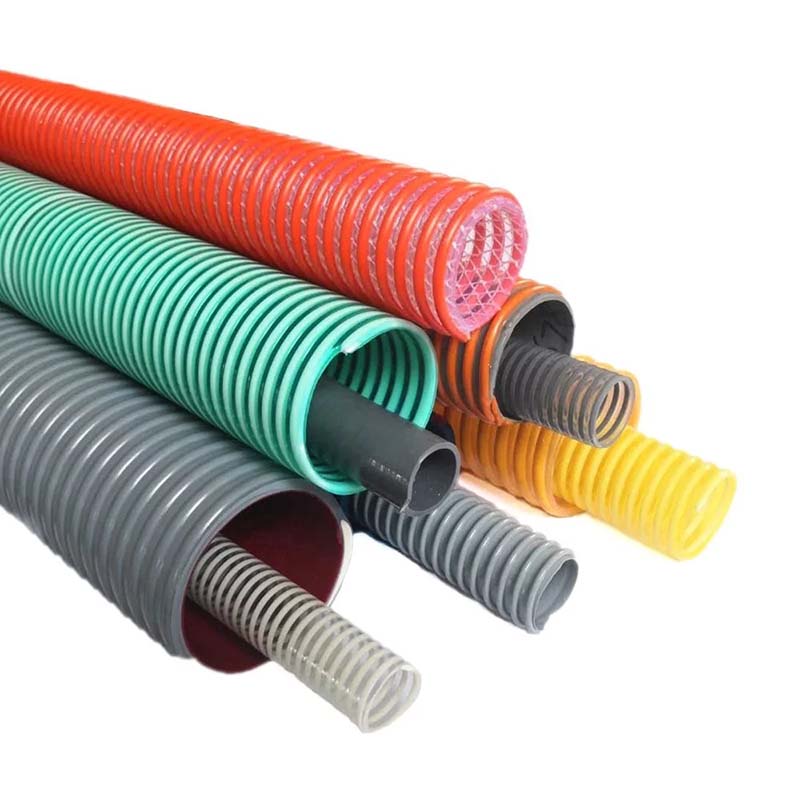
Diverse Applications and Strategic Advantages
The versatility of a blue suction hose makes it an indispensable component across a wide array of industrial and commercial applications. In the agricultural sector, these hoses are vital for irrigation systems, transferring water from wells, rivers, or reservoirs to fields, often handling abrasive silts without significant wear. Their flexibility allows for easy deployment across uneven terrain and efficient storage when not in use. Construction sites heavily rely on them for dewatering excavations, foundation work, and storm water management, where their resistance to crushing and ability to handle abrasive materials like sand, gravel, and concrete slurries is critical. The mining industry utilizes plastic suction hose for sump pumping, tailings transfer, and general water management, benefiting from their robust construction that withstands the harsh conditions of mine sites. For municipal water and wastewater treatment plants, these hoses are employed for sludge transfer, chemical dosing, and emergency bypass operations, valued for their corrosion resistance and ease of cleaning. Furthermore, marine applications, including bilge pumping, dockside water transfer, and aquaculture, leverage the hose's lightweight nature and excellent resistance to saltwater environments. The inherent advantages of PVC hoses, such as their lighter weight compared to rubber alternatives, significantly reduce installation effort and transportation costs. Their superior chemical resistance ensures longevity when exposed to various media, including mild acids and bases, extending their operational life far beyond traditional hose materials. This wide range of utility underscores the strategic advantage of investing in high-quality PVC suction hoses, as they contribute significantly to operational efficiency, reduce maintenance requirements, and ensure environmental compliance across numerous industries.
Beyond general utility, specialized variants like the clear PVC suction hose offer unique advantages for specific applications where visual monitoring of fluid flow is essential. This transparency allows operators to quickly identify blockages, air bubbles, or changes in fluid composition, which is particularly beneficial in food processing, pharmaceutical manufacturing, or certain chemical transfer operations where contamination control and process visibility are paramount. The smooth inner wall of these hoses minimizes frictional resistance, optimizing flow rates and reducing the energy consumption required by pumps, which translates into significant operational cost savings over the hose's lifespan. Furthermore, the inherent corrosion resistance of PVC means these hoses are unaffected by rust or scale buildup, a common issue with metallic pipes, ensuring consistent performance and purity of transferred media. Their robust construction, reinforced with a rigid helix, also provides excellent resistance to kinking and crushing, preserving flow integrity even under challenging conditions. In an application example, a large-scale agricultural project in the arid regions of California transitioned from traditional rubber hoses to modern PVC suction hoses for their irrigation pumps. This change resulted in a documented 15% increase in pumping efficiency due to reduced friction losses and a 25% reduction in hose replacement costs over a three-year period, attributed to the PVC hoses' superior abrasion and UV resistance in the harsh desert environment. Similarly, a municipal dewatering project in Florida saw a significant decrease in operational downtime by adopting flexible and lightweight blue suction hose for their temporary pumping stations, enabling faster setup and relocation of equipment, proving the tangible benefits of these advanced hose solutions in real-world scenarios.

Manufacturer Selection and Customization Solutions
Selecting the right manufacturer for industrial hoses, particularly for a critical component like a blue suction hose, requires a meticulous evaluation of several key factors that extend beyond initial cost. A reputable manufacturer differentiates itself through adherence to rigorous quality control standards, demonstrable engineering expertise, and a comprehensive understanding of diverse industry applications. Factors such as ISO certifications (e.g., ISO 9001 for quality management), specific product certifications (e.g., FDA compliance for certain food-grade applications, though not strictly for water pump hose), and a proven track record of service years in the industry are crucial indicators of reliability and authority. Manufacturers that consistently invest in research and development to enhance material properties, improve manufacturing processes, and expand product lines are more likely to offer cutting-edge solutions that address evolving industry demands. Moreover, the ability to provide detailed technical data, including comprehensive test reports and performance curves, reinforces a manufacturer's commitment to transparency and product integrity. It is also vital to assess their capacity for delivering consistent product quality across large volumes and their efficiency in meeting demanding delivery schedules, which is critical for large-scale industrial projects. A robust post-sales support infrastructure, including technical assistance, troubleshooting guides, and a clear warranty policy, further solidifies a manufacturer's trustworthiness and long-term partnership potential. Companies that prioritize client relationships and offer responsive technical support ensure operational continuity and minimize potential downtime for their customers. This holistic approach to vendor selection ensures that the chosen supplier is not just a provider of hoses but a reliable partner in optimizing fluid transfer systems.
The dynamic needs of modern industries frequently necessitate tailored solutions that standard off-the-shelf products cannot fully address. This is where a manufacturer's capability for customization becomes a significant competitive advantage. For a plastic suction hose, customization options can range from specific lengths, non-standard diameters, and unique end fittings to specialized material blends for enhanced chemical resistance, temperature tolerance, or abrasion protection. For instance, a client in the chemical processing industry might require a blue suction hose with specific resistance to a particular corrosive agent not typically handled by standard PVC, necessitating a custom polymer blend. Similarly, a construction company operating in extreme climates might need a hose with an extended temperature range. Expert manufacturers can collaborate closely with clients to understand their precise operational challenges and engineer bespoke hose solutions that precisely meet these unique requirements. This includes advising on optimal material selection, designing custom helix structures for enhanced flexibility or rigidity, and integrating specialized couplings or flanges directly into the hose during the manufacturing process for seamless system integration. The customization process often involves engineering analysis, prototyping, and rigorous testing to ensure the tailored hose performs as expected in its intended application. Kebing Hose, with its years of experience and specialized production capabilities, exemplifies a manufacturer proficient in delivering such custom-engineered plastic hose solutions, ensuring that clients receive products perfectly optimized for their specific and often challenging industrial fluid transfer needs. This approach not only provides a superior product but also builds enduring trust and demonstrates a deep commitment to client success and operational excellence. Our average delivery cycle for standard orders is 7-14 days, with custom solutions taking 3-4 weeks, ensuring timely project completion.
Trustworthiness: FAQ and Support Commitments
Frequently Asked Questions (FAQ)
- Q: What is the typical lifespan of a blue suction hose?
A: The lifespan varies based on application, media conveyed, and environmental conditions. Generally, a high-quality PVC suction hose can last 5-10 years or more with proper installation, maintenance, and storage, especially when used within its specified pressure and temperature ranges. - Q: Can these hoses be used for abrasive materials like sand or gravel?
A: Yes, the rigid PVC helix and robust PVC compound of industrial suction hoses provide excellent abrasion resistance, making them suitable for transferring abrasive slurries, sand, gravel, and dry bulk materials. However, extremely sharp or high-velocity abrasive particles may reduce lifespan. - Q: Are plastic hose suitable for chemical transfer?
A: While PVC hoses offer good resistance to many chemicals, it's crucial to consult a chemical compatibility chart for specific media. Our technical team can provide guidance on suitability for particular chemicals, and custom formulations can be developed for highly corrosive substances. - Q: How do I ensure proper installation and prevent kinking?
A: To prevent kinking, always adhere to the hose's minimum bend radius during installation and routing. Avoid sharp turns or excessive pulling. Ensure fittings are properly secured to prevent leaks and maintain vacuum integrity. Correct hose sizing for the pump and application also minimizes stress. - Q: What is the difference between suction and discharge hose?
A: Suction hose (like the blue suction hose) is designed with a rigid helix to prevent collapse under vacuum when drawing liquids. Discharge hose, on the other hand, is primarily designed to handle positive pressure for expelling liquids and typically lacks the rigid helix structure, being more flexible and often lay-flat.
Delivery Cycle, Warranty, and Customer Support
At Kebing Hose, we understand the critical importance of timely delivery and unwavering support in B2B operations. Our standard delivery cycle for stock items and common configurations of plastic suction hose ranges from 7 to 14 business days, depending on order volume and destination. For specialized or custom-engineered hose solutions, the lead time is typically 3 to 4 weeks, allowing for meticulous design, production, and quality assurance processes. We maintain transparent communication throughout the order fulfillment process, providing regular updates to ensure clients are fully informed and can plan their operations accordingly. All our products, including the PVC Water Pump Suction Hose, are backed by a comprehensive 12-month warranty against manufacturing defects from the date of purchase. This warranty underscores our confidence in the quality and durability of our products, providing our clients with peace of mind and protection for their investment. Our commitment to customer satisfaction extends beyond product delivery. Our dedicated technical support team is available to assist with product selection, installation guidance, troubleshooting, and any post-purchase inquiries. We offer responsive support via phone, email, and online inquiry forms, ensuring that expert advice is readily accessible to optimize your fluid transfer systems. Our goal is not just to supply hoses, but to build lasting partnerships based on reliability, technical expertise, and exceptional service, supporting your operations long after the initial purchase. We believe that robust support and transparent commitments are fundamental pillars of trust in the B2B landscape, distinguishing us as a reliable partner for your industrial hose needs.
Authoritative References
- ASTM International. (2020). D1598/D1598M-19: Standard Test Method for Time-to-Failure of Plastic Pipe Under Constant Internal Pressure.
- ISO. (2015). ISO 9001:2015: Quality management systems – Requirements.
- Plastics Pipe Institute. (2019). PPI Handbook of Polyethylene Pipe.
- American National Standards Institute (ANSI). (2021). Relevant standards for fluid handling and piping systems.
- The Society of the Plastics Industry (SPI). (2018). Plastics Engineering Handbook.
-
advanced-corrugated-pvc-hose-technology-for-modern-industrial-needsNewsAug.22,2025
-
premium-fire-water-hose-solutions-for-global-industriesNewsAug.22,2025
-
industrial-suppliers-guide-to-premium-double-welding-hose-solutionsNewsAug.22,2025
-
premium-pu-pneumatic-hose-solutions-for-industrial-applicationsNewsAug.22,2025
-
wholesale-pvc-garden-hose-china-solutions-for-global-buyersNewsAug.22,2025
-
Wire Reinforced PVC Tubing Solutions for Global Industrial ApplicationsNewsAug.20,2025



